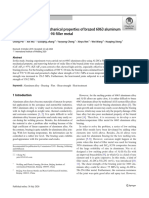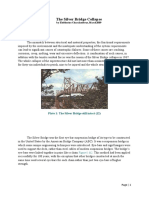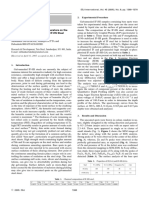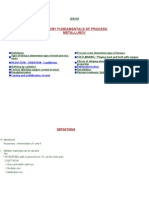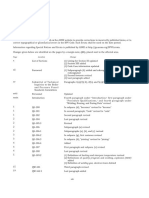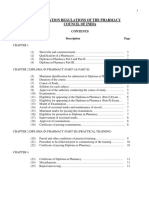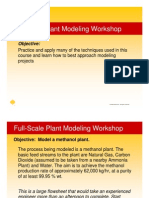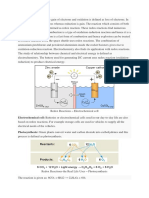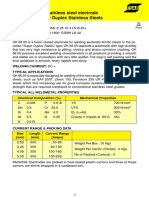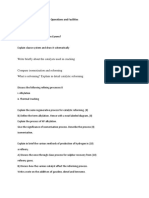The Above Test Report Relates Only To The Items Tested And Shall Not Be Reproduced Except In Full, Without The Written Consent Of MSi Testing & Engineering, Inc. All Specimen Remnants Pertaining To The Above Tested Items Are Retained For a Maximum Of 30 Days, Unless Notified In Writing.
MSi Investigative Summary
BACKGROUND
Two (2) partially machined impellers cast from C95200 aluminum bronze were submitted to our laboratory for casting failure analysis. The submitted castings identified as #1 and #3 exhibited casting surface defects primarily associated with the middle to OD sections of the impeller vanes. Casting of the impellers was reportedly performed in a steel mold that utilizes six furan cold box cores. The six core segments were assembled using core mud, banded, fitted with a ring and dried. Final processing of the core package included a graphite dip followed by drying in an oven. Hot metal at 2200ºF was introduced into the molds using low-pressure vacuum from the furnace. Metal from the sprue feeds into the drive hub, which is in the drag of the casting. Venting was reportedly from the OD of the mold. The casting, mold, and venting design are new. We were requested to determine the casting defect root cause.
SAMPLE IDENTIFICATION Description Material Sample ID
Cast Impellers CDA C95200 Aluminum Bronze Casting (#1) and Casting (#3)
PERFORMED TESTING
Visual and Stereoscopic Examination Metallographic (Microstructure) Examination Energy Dispersive Spectroscopy (EDS) Chemical Testing
CONCLUSIONS
1. Based upon the performed metallurgical failure investigation, it is our opinion the casting defect root cause was insufficient venting of gas within the molds produced from the reaction of the hot metal and cold box cores.

CONCLUSIONS
(cont.) 2. The exterior and interior profiles of the defects consisted of folded metal with foreign material that was entrapped along the boundaries of the folds during solidification. The foreign material was identified as containing a major elemental concentration of sulfur. 3. The source of the sulfur was most likely the SO
2
used as a catalyst in the making of the six cold box cores. Pressure build-up of gas released from the cores during fill of the mold resulted in excessive metal turbulence that formed numerous metal folds during solidification. The narrow solidification range of the aluminum bronze provided less time for proper venting of the reaction gas containing significant amounts of sulfur. 4. Visual and metallographic examination of the defect profiles revealed irregular surface wrinkles and subsurface folds of metal. Casting #1 exhibited the most severe defects, which on vane #2 extended through the full thickness of the vane. Metal folds and surface irregularities on casting #3 were predominantly confined to the surface, which were measured to a maximum depth of .010 – .012”. 5. The microstructure of the two castings consisted of an “as-cast” alpha and beta structure, which was characteristic of C95200 aluminum bronze. The foreign film lining the boundary of the defects appeared as gray to dark gray in appearance. No evidence was observed of any shrinkage cavities. 6. Energy dispersive spectroscopy (EDS) analysis of the foreign material lining the defects revealed a major elemental concentration of sulfur, which is not an element common to C95200 aluminum bronze. 7. The sulfur content of casting #1 was determined by chemical testing (OES) at < .005%, which indicated the sulfur detected in the material lining the metal folds was from a foreign source; most likely the furan cold box cores. 8. We respectively recommend that the venting design of the mold be reviewed to provide maximum release of gas produced from the cold box cores. Additionally, verify that proper procedures are followed during blow of SO
2
as catalyst during the production of the furan cold box cores to minimize reaction products formed in the mold during fill.
SUMMARY of TEST RESULTS Visual & Stereoscopic Examination
1. Visual and stereoscopic examination of Castings #1 and #3 revealed surface wrinkles and irregularities primarily associated with the middle to OD sections of the impeller vanes. The appearance of the wrinkles and irregularities suggested abnormal turbulence of metal within the mold cavity contributed to formation. (See Photos 1 – 4 on the following page)
SUMMARY of TEST RESULTS
(cont.)
Visual & Stereoscopic Examination
2. Surface defects on vanes 2, 3, and 4 on Casting #1 and vanes 5 and 6 on Casting #3 were sectioned for metallographic examination of the defect profiles.
Photo 1
: View of Casting #1.
Photo 2
: View of Casting #3.
Photo 3
: View of defects on vane #2 of Casting #1. .
Photo 4
: View of defects on vane #6 of Casting #3.
Metallographic Examination
1. Metallographic examination of the defect profiles revealed irregular surface wrinkles and subsurface folds of metal. Casting #1 exhibited the most severe defects, which on vane #2 extended through the full thickness of the vane. (See Photos 5 and 6)
2. Metal folds and surface irregularities on casting #3 were predominantly confined to the surface, which were measured to a maximum depth of .010 – .012”.
Photo 5:
Mag: 50X; Etchant: None
Photo 6:
Mag: 50X; Etchant: None View of defect profile of Casting #1 at the surface of vane 2. View of defect profile of Casting #1 at the mid-wall of vane 2.
Photo 7:
Mag: 100X; Etchant: NaOH
4
+ H
2
O
2
Photo 8:
Mag: 500X; Etchant: None View of defect profile of Casting #3 at the surface of vane 6. Close-up view of foreign material that lined the defect profiles. The material was subjected to EDS analysis.






























